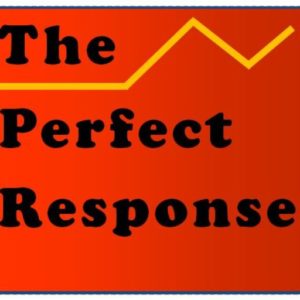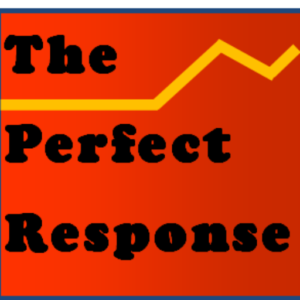Mission statements go to a different level to serve as “eulogistic coverings” that gloss over the human complexities underneath.
Anyone who has worked in an organization has met a boss or a consultant who urges the group to revisit their mission statement. It is a given that eyes will roll at the thought. No aspect of self-assessment is more susceptible to our cynicism. In our heart-of-hearts we know an organization is less an “it” than a multifaceted conglomeration. Singularity of function is partly a fiction.
In the course of a long career, I’ve been a party to perhaps five or six different efforts to take time–usually more than a few hours–to codify the goals and aspirations of the group. Academics in particular have turned this challenge into a kind of sport. But organizations that offer a range of complex services especially need to identify what they see as in and out of their purview. What are the essential goals and purposes of an organization? What is at the core of its service to others? Notwithstanding the problems, questions like hold out the chance of learning something useful.
 But any talk of objectives and goals can be a long way from what is going on down on the ground. What can be proclaimed to the world without shame? A formal mission statement is a sort of bath that is supposed to cleanse an organization of the petty interpersonal and political motivations that can tear it apart. A teacher’s daily goals may include real instrumentalities like getting to class on time, finding a computer and internet connection that will work, or dealing with a nonstop talker. These are essential day-to-day functions, but they are not going to appear in a statement to an external audience.
But any talk of objectives and goals can be a long way from what is going on down on the ground. What can be proclaimed to the world without shame? A formal mission statement is a sort of bath that is supposed to cleanse an organization of the petty interpersonal and political motivations that can tear it apart. A teacher’s daily goals may include real instrumentalities like getting to class on time, finding a computer and internet connection that will work, or dealing with a nonstop talker. These are essential day-to-day functions, but they are not going to appear in a statement to an external audience.
The rhetoric of a mission statement is almost always earnest and panoramic: taking the high road to fulfilling goals that are self-evidently good. One version of McDonald’s statement is “to be our customers’ favorite place and way to eat and drink.” For Chick-fil-A it is “to glorify God by being a faithful steward of all that is entrusted to us.” That’s a high road indeed. But by the time of yet another go-around–especially for those of us who have been at a place since it was wired for electricity–it is easy to notice that the day-to-day work of the organization involves functions that are mostly disconnected from the lofty ideals frothed up in any statement. For my part, in terms of anxiety about success or failure, making sure that the electronic equipment in my teaching space would actually work was always at the top of my list. Creating transformative insights might come in due course.
Other concerns that would not soar in a mission statement might include ending the infighting between units or individuals, defusing interpersonal hostility that is saps productivity and morale, or dealing with defections of individuals who have functionally left the organization. None of these problems are communicated to customers or stakeholders. Mission statements go to a different level to serve as “eulogistic coverings” that can be draped over the more frail human mechanisms underneath.
Aside from their distance from the day-to-day work of an organization, another problem with these declarations of noble intent is that there is always a considerable gap between goals that we can imagine, and the actual reasons we behave as we do. An organization is a tool to achieve something. But it also is a community of needs-driven people. And parsing intentionality informed by those needs is a tricky business. We can declare our reasons for engaging in a single action or some grand collective effort. But the expression of these is usually a long way from more authentic and sometimes unknowable motivations. Ask a person why they took that selfie, and you are apt to get a reason that deflects attention away from a more likely reason. It simply won’t do to say that we took the picture because we think we are pretty, or that we would like to stir up a little envy in those who receive it.* We’ve seen great comedy made out of these rituals with subterranean origins. My favorites include NBC’s The Office and the BBC’s WIA.*
To take a more complex case, a group can claim that they exist to serve their customers and the larger community. But the performance of tasks they take on may suggest more strategic motives: to reassure nervous shareholders, to increase profits by cutting staff pensions or benefits, or perhaps to streamline operations by outsourcing various functions. None of these immediate goals will appear in gold and bold type on the first page of an annual report. Indeed, some corporate strategies are so hostile to customers and employees that a perverse kind of institutional success occurs if their objectives never see the light of day.
A simple recommendation to a group gathered over stale coffee and rolls is cut down on the amount of time formulating these statements, recognizing that what is produced is an exercise in aspirational rhetoric. Since the purposes of a group of individuals are partly unknowable, spending time on them can consume the energy needed to face tough challenges. It’s better to get on with the work of making the most of the financial and human resources that are realistically available. In addition, though a single document offers no easy way to acknowledge how individuals deploy their varied talents, it helps to at least signal their existence.
___________________________________
*Exploring how we mostly fail to discover and accurately name intentions is the subject of the author’s The Rhetoric of Intention in Human Affairs (2013).
![]()



